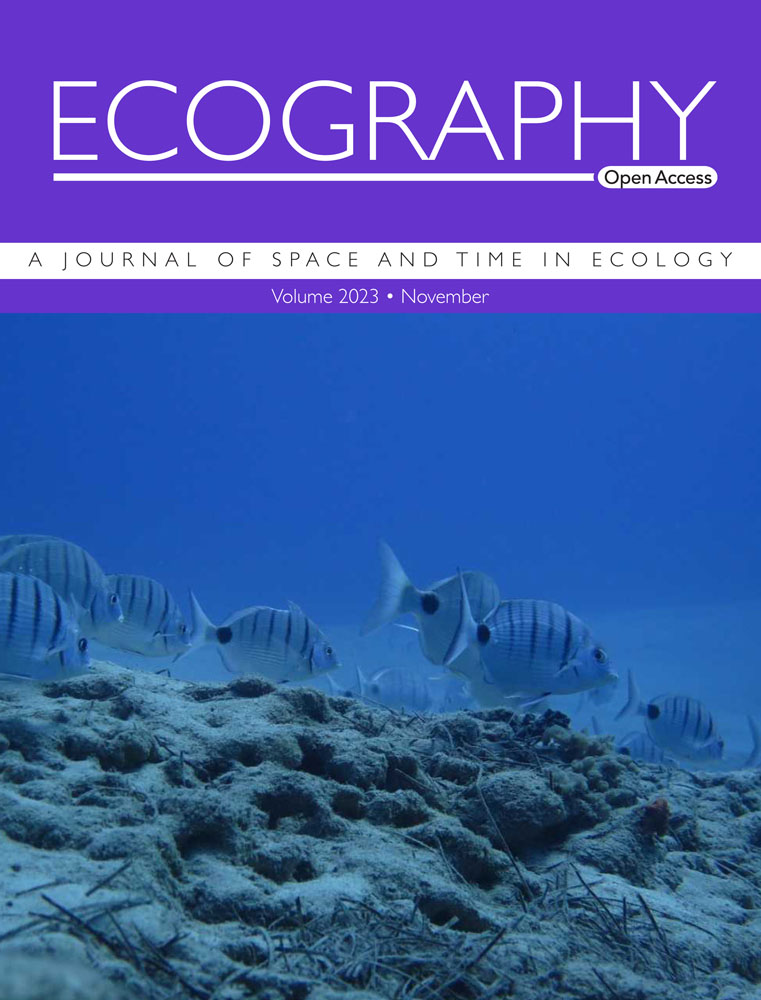‘ILSM': a package to analyze the interconnection structure of tripartite interaction networks
IF 4.7
1区 环境科学与生态学
Q1 BIODIVERSITY CONSERVATION
引用次数: 0
Abstract
In natural or human‐disturbed ecosystems, ecological networks often comprise multiple interaction types, which have been increasingly represented by multipartite ecological networks. One important aspect of their network architecture is how different interaction types or subnetworks are interconnected by connector species, here defined as the interconnection structure. Previous studies have proposed various indices of connector species to characterize macro‐scale interconnection patterns and micro‐scale centrality, but the meso‐scale interconnection structures (here defined as interconnection motifs) remain largely unexplored. Furthermore, there is no package available in the R programming language for conducting analyses of various interconnection structures.Within a tripartite network with two interaction subnetworks, we define the forms of interconnection motifs and unique roles within these motifs. Then we introduce the R package ‘ILSM' for analyzing interconnection pattern, interconnection centrality, and interconnection motif for unweighted and weighted networks. Specifically, we derive mathematical expressions for the frequencies of interconnection motifs and species roles within motifs.We describe the main functions in the package and demonstrate their uses with an example pollinator–plant–herbivore network. In addition, we show that interconnection motifs can reveal additional variation beyond interconnection patterns and centrality using empirical tripartite interaction networks.‘ILSM' will help ecologists understand how different types of interactions are interconnected by shared species using interconnection pattern, centrality, and motif.“ILSM”:一个分析三方交互网络互连结构的软件包
在自然或人为干扰的生态系统中,生态网络通常由多种相互作用类型组成,这种相互作用类型越来越多地以多方生态网络为代表。它们的网络架构的一个重要方面是不同的交互类型或子网如何通过连接器种类相互连接,这里定义为互连结构。先前的研究已经提出了各种连接器种类的指标来表征宏观尺度的互连模式和微观尺度的中心性,但中尺度的互连结构(这里定义为互连基序)仍未被探索。此外,在R编程语言中没有可用的包来进行各种互连结构的分析。在一个具有两个相互作用子网络的三方网络中,我们定义了相互连接基序的形式和在这些基序中的独特角色。然后,我们引入了R包ILSM来分析非加权和加权网络的互连模式、互连中心性和互连基序。具体地说,我们推导了互连基序频率和基序内物种作用的数学表达式。我们描述了包中的主要功能,并以传粉者-植物-食草动物网络为例演示了它们的使用。此外,我们还表明,使用经验三方相互作用网络,互联基序可以揭示除互联模式和中心性之外的其他变化。“ILSM”将帮助生态学家了解不同类型的相互作用是如何通过共享物种使用互连模式,中心性和基序进行连接的。
本文章由计算机程序翻译,如有差异,请以英文原文为准。
求助全文
约1分钟内获得全文
求助全文
来源期刊

Ecography
环境科学-生态学
CiteScore
11.60
自引率
3.40%
发文量
122
审稿时长
8-16 weeks
期刊介绍:
ECOGRAPHY publishes exciting, novel, and important articles that significantly advance understanding of ecological or biodiversity patterns in space or time. Papers focusing on conservation or restoration are welcomed, provided they are anchored in ecological theory and convey a general message that goes beyond a single case study. We encourage papers that seek advancing the field through the development and testing of theory or methodology, or by proposing new tools for analysis or interpretation of ecological phenomena. Manuscripts are expected to address general principles in ecology, though they may do so using a specific model system if they adequately frame the problem relative to a generalized ecological question or problem.
Purely descriptive papers are considered only if breaking new ground and/or describing patterns seldom explored. Studies focused on a single species or single location are generally discouraged unless they make a significant contribution to advancing general theory or understanding of biodiversity patterns and processes. Manuscripts merely confirming or marginally extending results of previous work are unlikely to be considered in Ecography.
Papers are judged by virtue of their originality, appeal to general interest, and their contribution to new developments in studies of spatial and temporal ecological patterns. There are no biases with regard to taxon, biome, or biogeographical area.
 求助内容:
求助内容: 应助结果提醒方式:
应助结果提醒方式:


